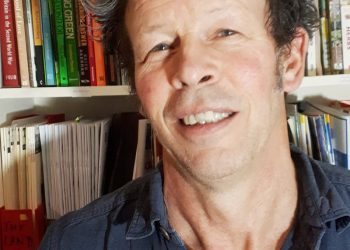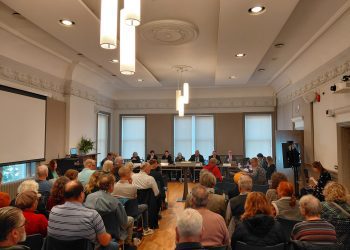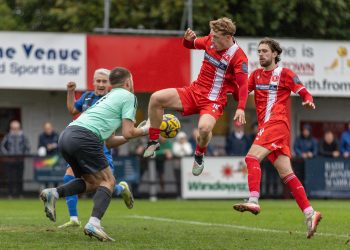If you had a couple of hours and a shilling to spare one evening towards the end of August in 1818 you could have wandered up to Mr Porch’s new establishment, the Wheatsheaves Inn in Bath Street and seen one of the wonders of the age – 12-year-old George Parker Bidder, son of stonemason William Bidder from Mortonhampstead on the edge of Dartmoor.
George was born on 13th June 1806, one of an eventual nine children, and attributes the discovery of his talent to a time when he passed the door of the blacksmith’s shop which stood opposite that of his father. He was, in his own the words, ‘raised to the dignity of being allowed to blow the bellows’ and was asked some questions in arithmetic by the old blacksmith who got his nephew to check the answers which were always correct. ‘As a natural consequence my fame grew and what was better, it eventually caused halfpence to flow into my pocket, which needless to say, attached to me still more to the science of arithmetic.’
It is said that his father exhibited his talent at local fairs up until the age of about six when his horizons were broadened by being shown off around the country. The venture was very profitable but at the expense of a more general education which was apparent to people like Sir John Herschel, a man of prodigious mathematical talents himself who arranged for the lad to be sent to school in Camberwell but a normal education was thwarted by his father who wished to continue along the profitable exhibition route.
A newspaper article from February 1813 describes how at the age of six when asked the square root of 149,969 he was able to answer correctly in a few seconds that, ‘it has none!’
1818 saw him in Frome and a poster advertising the event was printed by the Crockers also of Bath Street, and one of whom, the father, Abraham, was something of a polymath himself.
Some of the questions that he was able to answer without hesitation were, ‘What number taken from the square root of 56 will leave 13×42?’ the answer was 2,590. ‘How long would a snail take creeping, at eight feet per day from Lands’ End, Cornwall to Ferrets Head, Scotland, a total of 838 miles?’ Answer 553,080 days.
Bidder at the Wheatsheaves Inn, Bath Street in 1818
Were he around today he would probably have ended up on a television gameshow pretty much the modern equivalent of the exhibitions that his father chose for him but luckily some people with power and money recognised his talents were worth far more than an appearance in freak shows.
A few weeks after his performance in Frome, in November of 1818, he was brought before the Duke of York and astonished him with his powers of calculation, pleasant manners and ‘remarkably amiable temper’.
In 1819 whilst performing in Norfolk it was reported that he been ‘handsomely provided for by the Duke of York.’
Eventually he was able to attend Edinburgh University leaving in 1824 to take up a position with the Ordnance Survey. The post did not match his capabilities and in 1834 he took up an appointment with Robert Stevenson, the railway engineer and builder of the famous Rocket. He was to work with Stevenson on the London and Birmingham Railway and also assisted him in his promotion of the railway cause in Parliament.
Bidder was closely involved with the line from London to Brighton as well as others and took to engineering with a passion during the golden age of English railway construction and it was said that there was scarcely an engineering matter before Parliament over which his opinion was not sought. He was elected president of the Institution of Civil Engineers in 1860.
After a brilliant career as an engineer and innovator, Bidder died at the age of 72 in Dartmouth, Devon in 1878.
He is regarded as the second greatest mental calculator of all time behind the Italian Jacques Inaudi (1867-1950).
Mick Davis






















